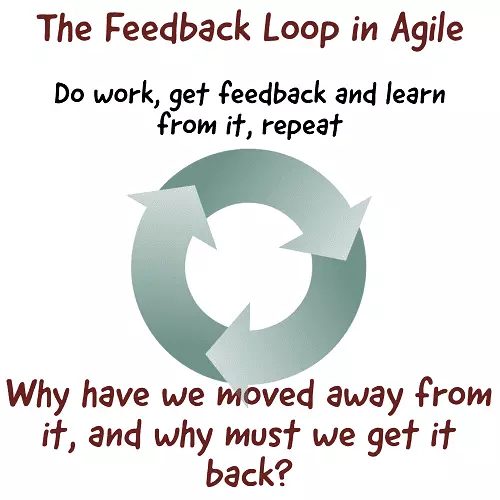
What is systems thinking? What is this concept that can help both understand systems, but to build better systems? Systems thinking is a mindset that can help you, wait for it, build better systems!
- Some definitions to help with what is systems thinking
- What is systems thinking – it relies heavily on logic and rules
- Systems thinking is also about balance and interconnectivity
- What is systems thinking – but a way to understand how pieces form a whole
- Additional content and books to help with what is systems thinking
Some definitions to help with what is systems thinking
First, what is a system? There are a lot of definitions out there. Below are 4 definitions from Merriam Webster, that combined, form my idea of a system. Lets explore these ideas further, and then see why thinking in system terms is so beneficial, especially when trying to build a system.
“a group of devices or artificial objects or an organization forming a network especially for distributing something or serving a common purpose”
“an assemblage of substances that is in or tends to equilibrium”
“an organized or established procedure”
“harmonious arrangement or pattern”
“System.” Merriam-Webster.com Dictionary, Merriam-Webster, https://www.merriam-webster.com/dictionary/system. Accessed 30 Jan. 2021
Something existing to distribute or serve a purpose is the first part of the idea. Systems exist for reasons. They are built to solve problems and meet needs. They also exist naturally, to form the relationships that exist in things around us. Systems thinking is about understanding the reasons for the systems and the relationships amongst the pieces of the system.
Which leads into the other definitions. Systems thinking is about the understanding of how things work towards or being in equilibrium. Or an organized or established way of things. Lastly, arrangements or patterns that are in a kind of harmony. These definitions are all part of an idea of things working together, as part of a larger system or to meet a larger goal.
In all, objects and actions that form together to serve a purpose and do so in a way that brings a sort of harmony to the flow and results created. That is a system. So let’s continue and dig into what is systems thinking.
What is systems thinking – it relies heavily on logic and rules
Systems thinking is being able to apply a set of logic and rules. Logic and rules that describe how things work. This seems simple, but in complex systems there can be so many varied interactions between components and pieces of the system, that being able to define all of them is quite the undertaking. But understanding the rules behind that interaction will go a long ways to helping build better systems.
Systems thinking in a way, is about cause and effect, or input/output. What is done, and what happens because of it. Following that type of basic logic, through the entire throughput or lifetime of the inputs/outputs. This helps to understand the interconnect ted pieces of a system.
Systems thinking involves moving away from exception based logic. Where flows can be defined/described. While systems allow for room for chaotic event and exceptions. Building exceptions into systems from the beginning is cause for errors.
If your team is building a software system, and there is flawed logic from the beginning, there will be problems. Either in system performance later, or the problems might be in user needs not being met. Because rules and logic to behave by couldn’t be determined, there will be flows outside of what the system does.
Systems thinking is also about balance and interconnectivity
Systems exist in nature. A thing doesn’t have to be a machine or software and hardware to be a system. The natural balance of ecosystems. The dependence between the living things in the natural environment, and the checks and balances that keep things in a natural order. That is a system in nature.
The circular behavior or tendencies of the patterns that occur in nature is a system. The causal flow of actions, and most importantly, the reactions to actions, are because of the system that exists. When one thing occurs in a natural environment, or system, there is typically downstream effect from that occurrence. Other parts of the system are impacted in some way by the occurrence. So when asking what is system thinking, refer back to nature and the natural order of things. Understanding how things are interconnected is part of systems thinking.
Consistency is a key factor
Using logic and rules to describe how something is to behave, you can create something that behaves consistently. Consistent behavior of a system to meet user needs is very valuable. It is dependable, and when users know they can depend on a system, they will use it.
Reduce and simplify, to get to the common denominator. Remove extra complexity, to find the base set of rules that applies to the process. Good systems work without you ever realizing there is an underlying system. So create software systems for your users that work smoothly, and you will see great success. Finding a way to create the rules and logic that work well without extra maintenance, and that work continually, and consistently. That is part of what is systems thinking.
What is systems thinking – but a way to understand how pieces form a whole
Systems thinking is really a form of analysis that tends to focus on how individual parts of a system connect and how those pieces work within the system over time. Building understanding of how the pieces of a system work together, and what those pieces complete together. Instead of trying to understand the pieces on their own and what they do individually. So what is systems thinking, if not an understanding of how all the pieces become a whole?
Additional content and books to help with what is systems thinking
Understanding of input/output will help to understand what is systems thinking. Input and output, or responses to actions, can also be caused feedback. Feedback is a critical part of good Agile software development. Check out more info on Feedback Loops as they are a huge part of systems thinking.
A good way to start with understanding a system is by understanding its pieces and components. Vertical Slicing of user stories in Agile development is a process to help break up the work into manageable pieces. It applies to helping understand a whole system as well. Check out the eBook by Agile Rant!
The breaking or splitting of work in such a way, is a good way to help create the pieces of a system. Systems thinking can help you to understand the whole, as a starting place for where to start splitting the stories up. Another great piece of information on Vertical Slicing is available here. Check out Vertical Slices at Leanpub, here.


